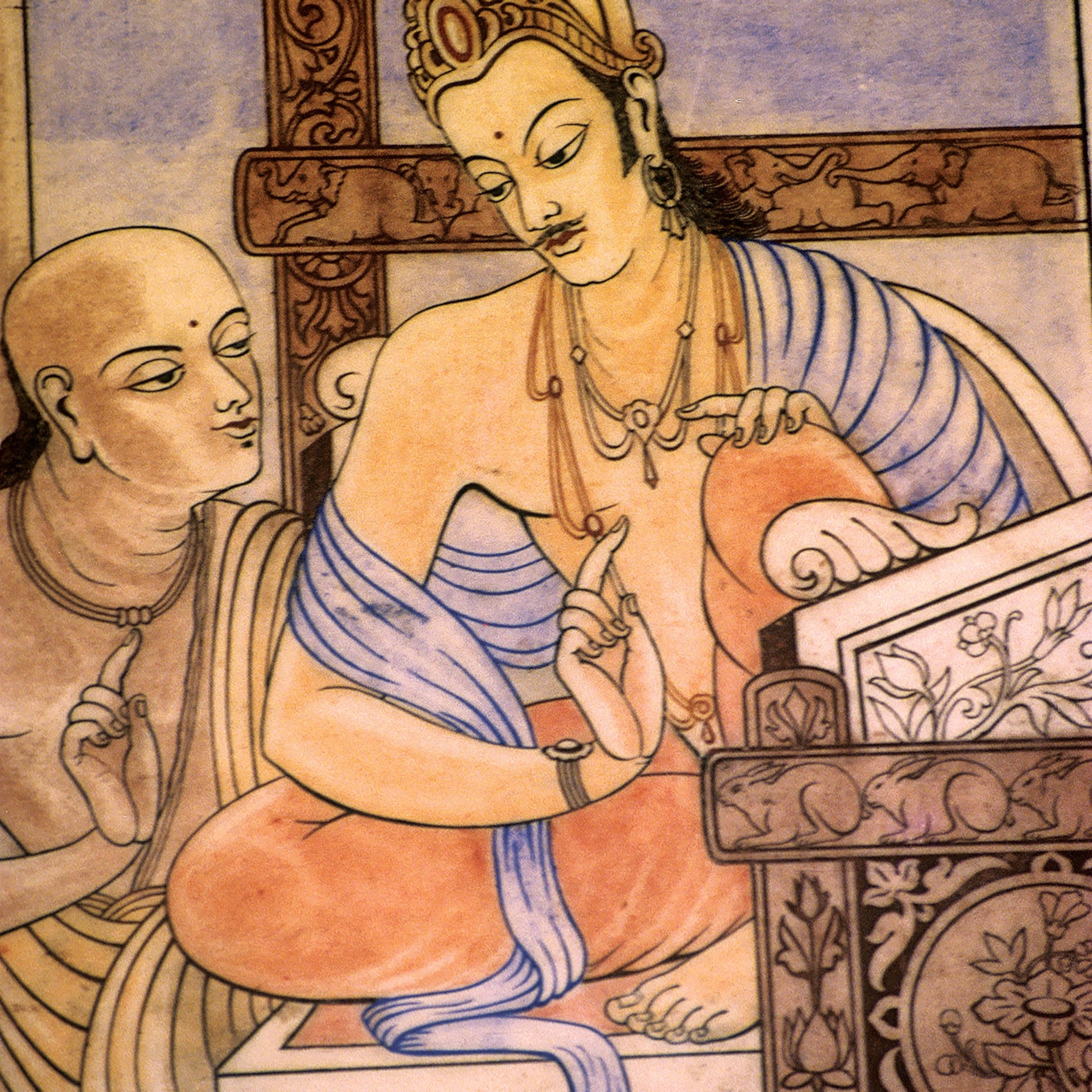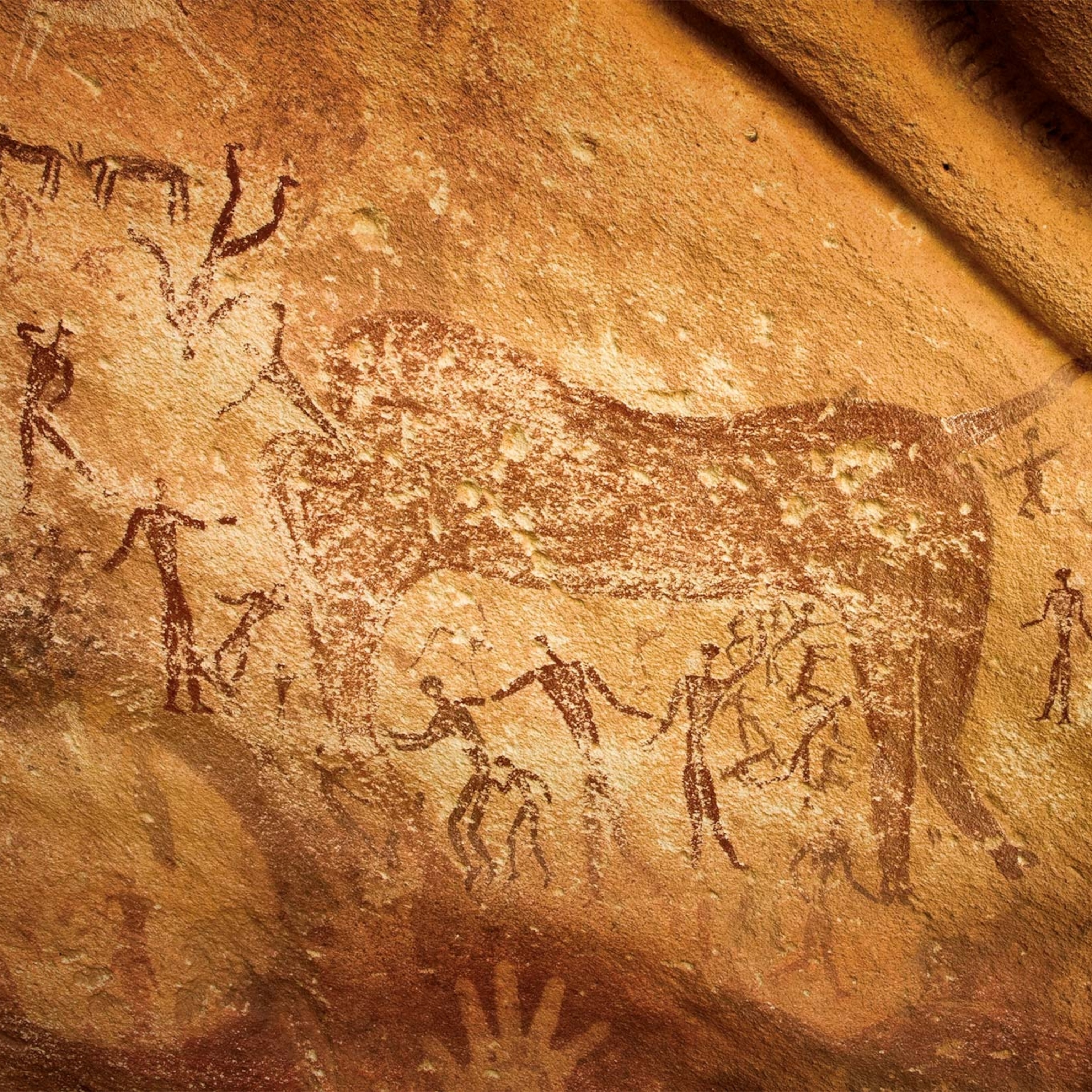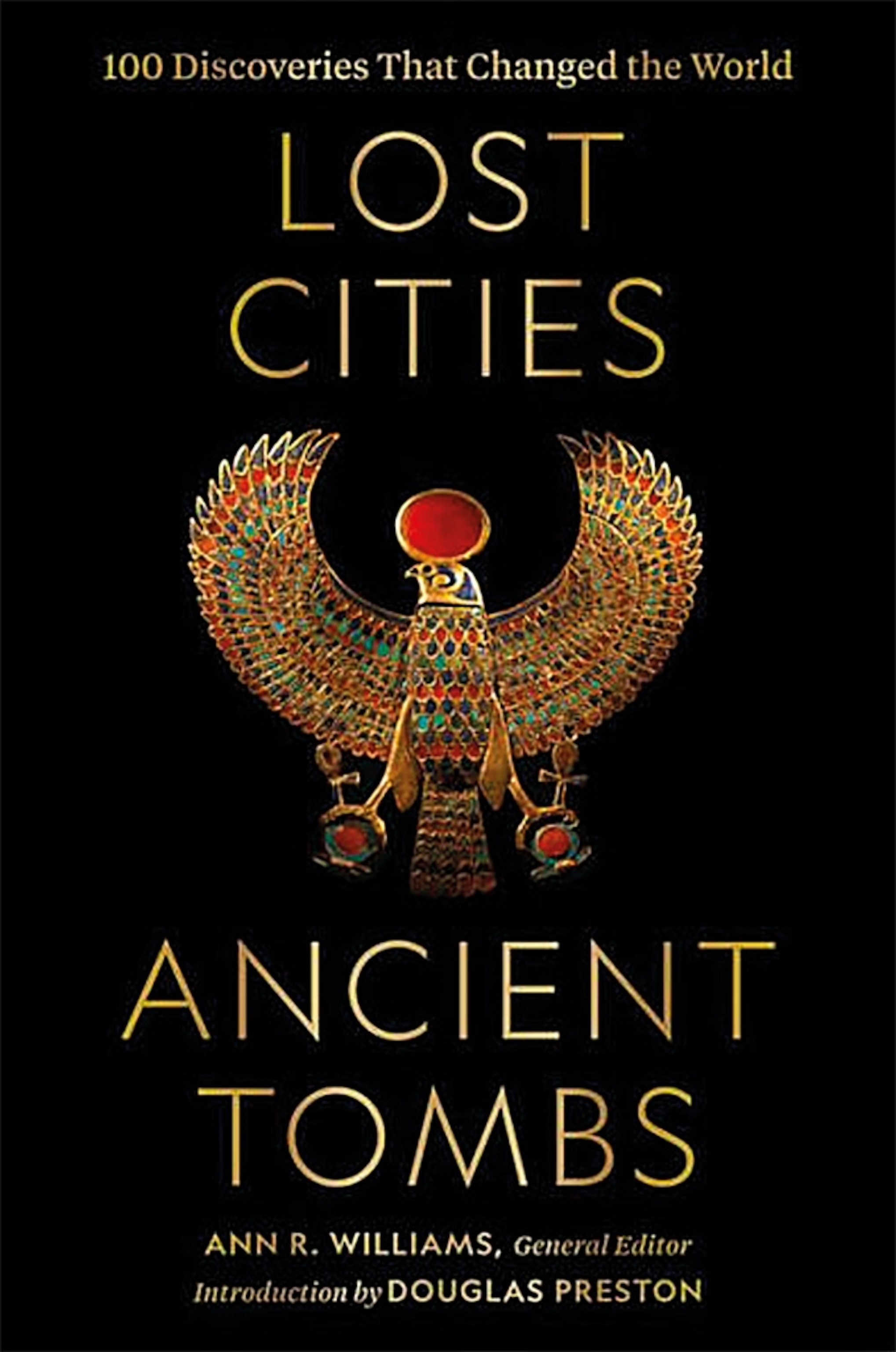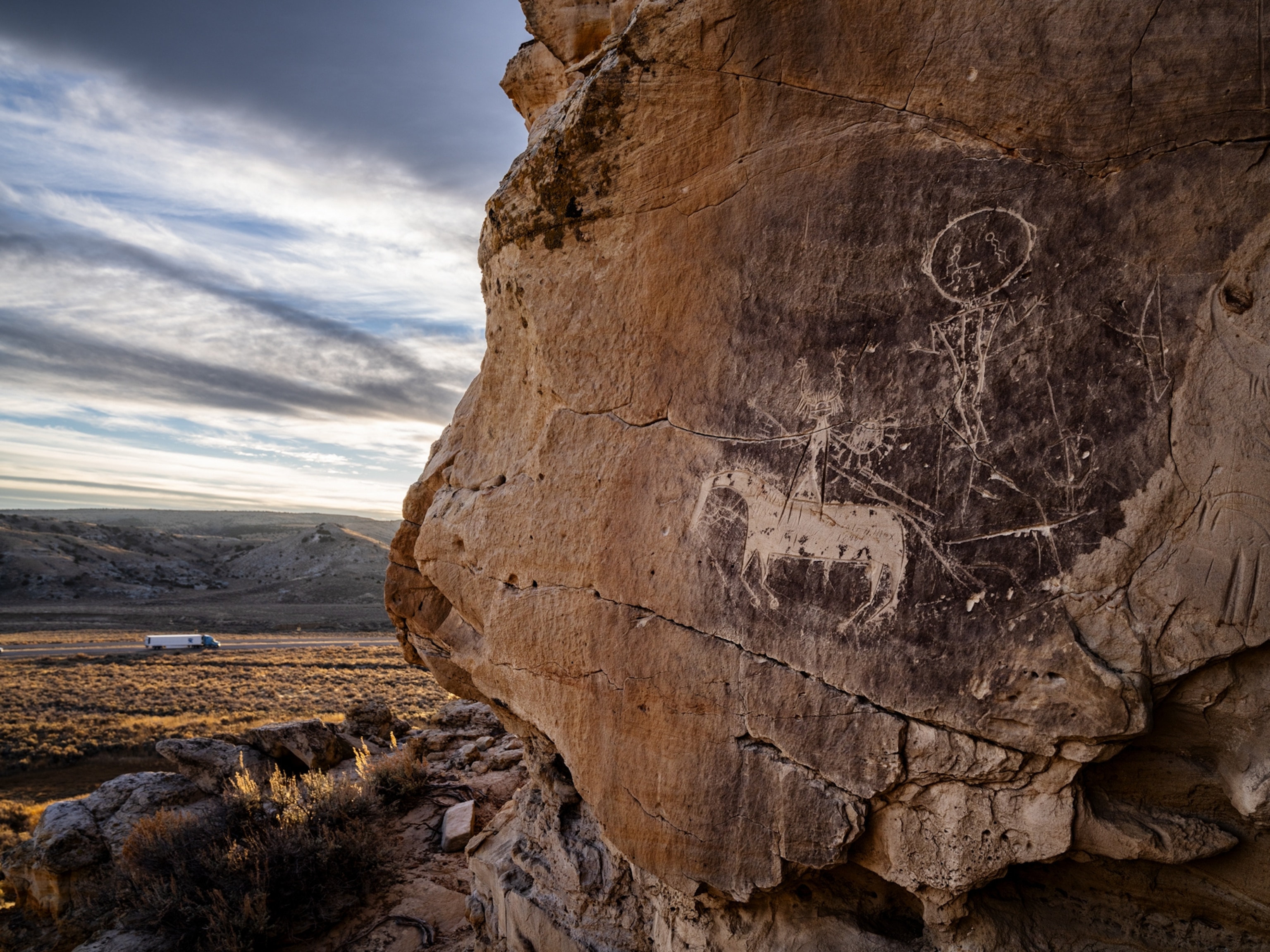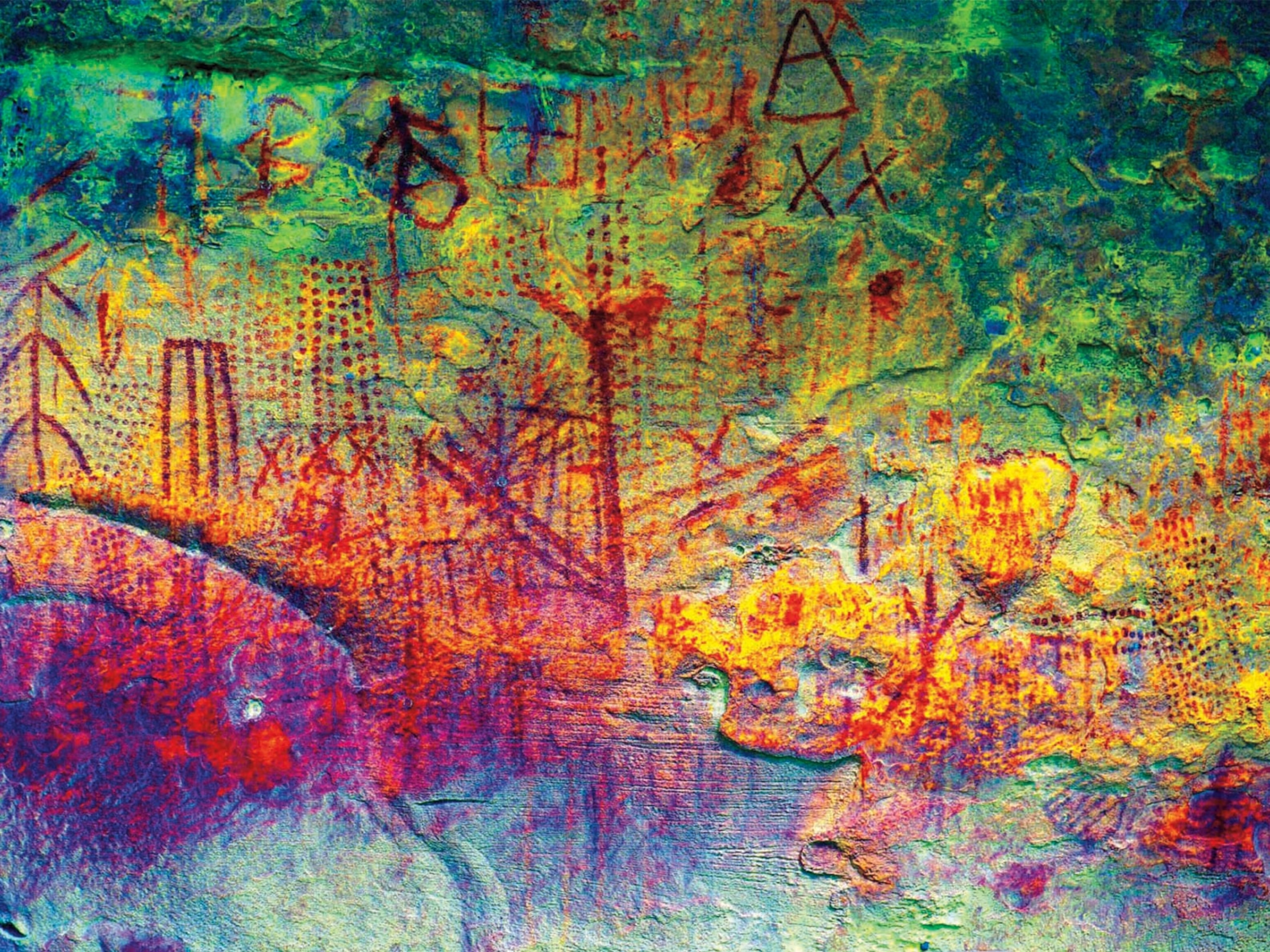
Buddhist masterpieces lay hidden for centuries inside these Indian caves
Cut from a sheer cliff face nearly a thousand years ago, India's Ajanta Caves are home to sacred Buddhist spaces adorned with vibrant works of ancient art.
Along a horseshoe-shaped cliff above the Waghora River in central India, a cadre of British soldiers set out in 1819 hoping to bag a tiger. Their hunting party stumbled upon something surprising: a network of man-made caves ingeniously and dramatically cut into the rock. The beauty of the stonework was just a hint to what awaited inside those stone halls.
The interiors of the caves, home to bats and familiar to local tribes but otherwise unknown to the rest of the world for roughly 14 centuries, revealed a singularly astonishing collection of religious art. The immense murals, rock-cut sculptures, shrines (stupas), monasteries, prayer halls, and inscriptions created over centuries exemplify masterpieces of early Buddhist art and the creative achievements of classical India under the influential Gupta dynasty. And yet, surprisingly, only a few local residents knew of their majestic splendor.
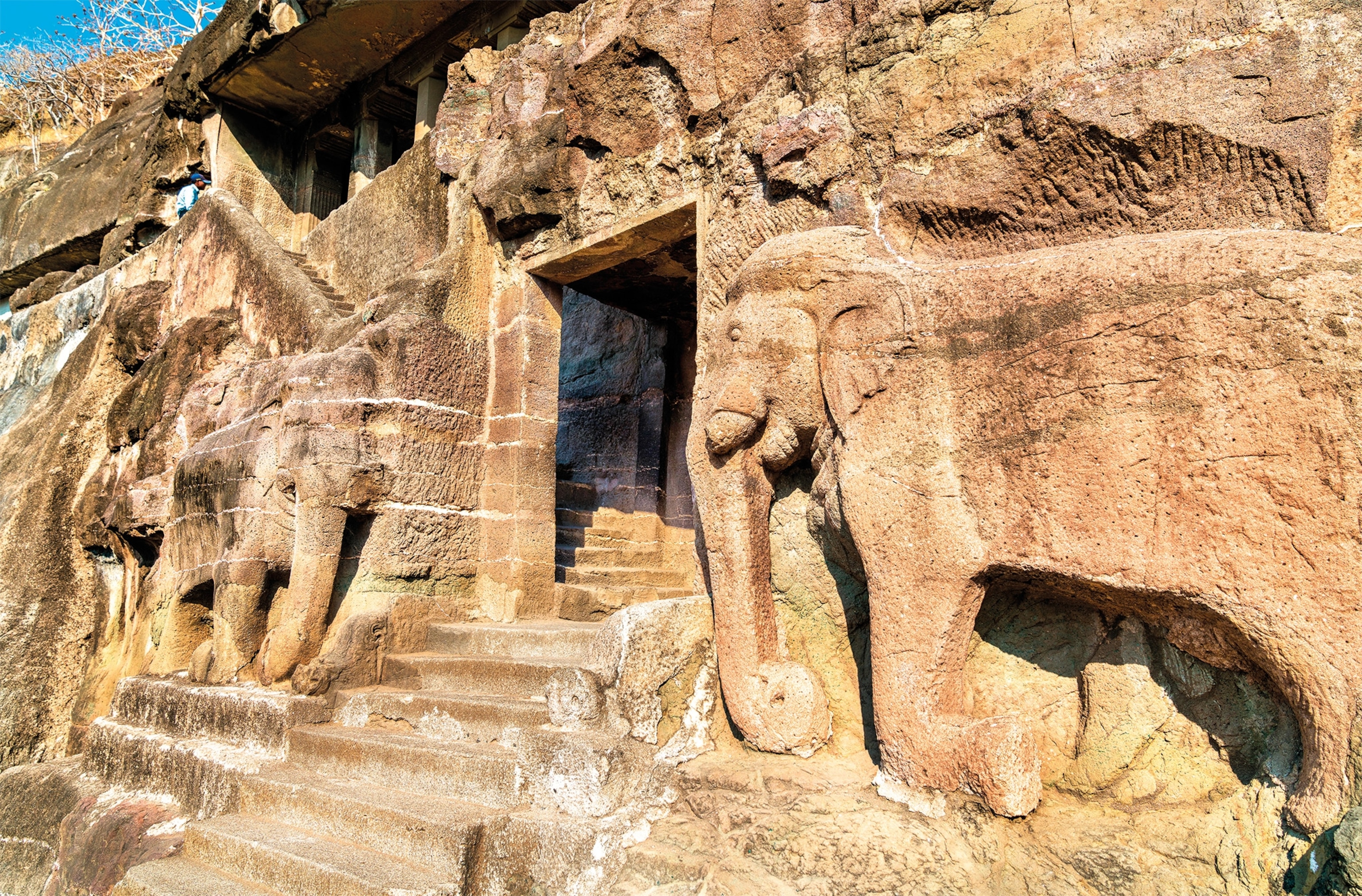
Geologic origins
About 66 million years ago, a hundred thousand or more years before the so-called Chicxulub impact (the asteroid collision credited with the extinction of the dinosaurs), one of the largest volcanic eruptions in history began flooding India’s Deccan Plateau with roughly 135,000 cubic miles of lava. When the dust settled and the lava cooled, the entire region was covered in a layer of igneous basalt.

Many of India’s major dynasties would arise on this plateau. Their rock carvings and inscriptions offer some of the best records of these early societies. Near the ancient town of Ajanta, roughly 30 caves carved by humans perforate the sweep of a dark basaltic rock face. Their facades are unexpectedly grand, with paintings, pillars, and statuary reminiscent of the sculpted temples in the ancient city of Petra in Jordan and the frescoes of Pompeii.
The lavishness of the Ajanta complex reflects its royal patronage. Although some of the cave temples date to the second and first centuries B.C., most of them were carved during the reign of a Vakataka emperor named Harishena, who ruled a large swath of central India in the mid-fifth century A.D. At one time, several hundred monks were living in the caves.
The period of Ajanta as a thriving religious and artistic center appears to coincide with the reign of Harishena, who died in 478. By the seventh century, the monastery began to empty, the caves were abandoned, and Ajanta’s beautiful paintings fell into obscurity. Buddhism would gradually disappear from India, the country of its birth; by the end of the 13th century, its holy places were either destroyed or abandoned in the wake of invasions from Muslim armies.
Monastic splendor
Most of Ajanta’s caves were designed as prayer halls (chaityas) and living quarters (viharas). They feature central chambers lined with columns that open into a shrine where a statue of the Buddha still sits. Along the outer corridors, doorways open to monks’ cells, bare except for stone beds.

For the most part, the architectural mood is solemn, reverential—but the walls are adorned with something almost otherworldly. The most elaborate of the caves were designed for enlightenment, and many of their walls were covered with inspirational paintings.
Only fragments of a majority of the murals have survived the centuries. Enough remain to summon the sensual and spiritual atmosphere that infused these temples. All of known creation appears to have paraded across their walls. There are images of the Buddha and of bodhisattvas—other enlightened beings. There are princes and princesses, merchants, beggars, musicians, servants, lovers, soldiers, and holy men. Elephants, monkeys, buffalo, geese, horses, and even ants join the human throng. Trees bloom, lotus blossoms open, vines curl and reach.
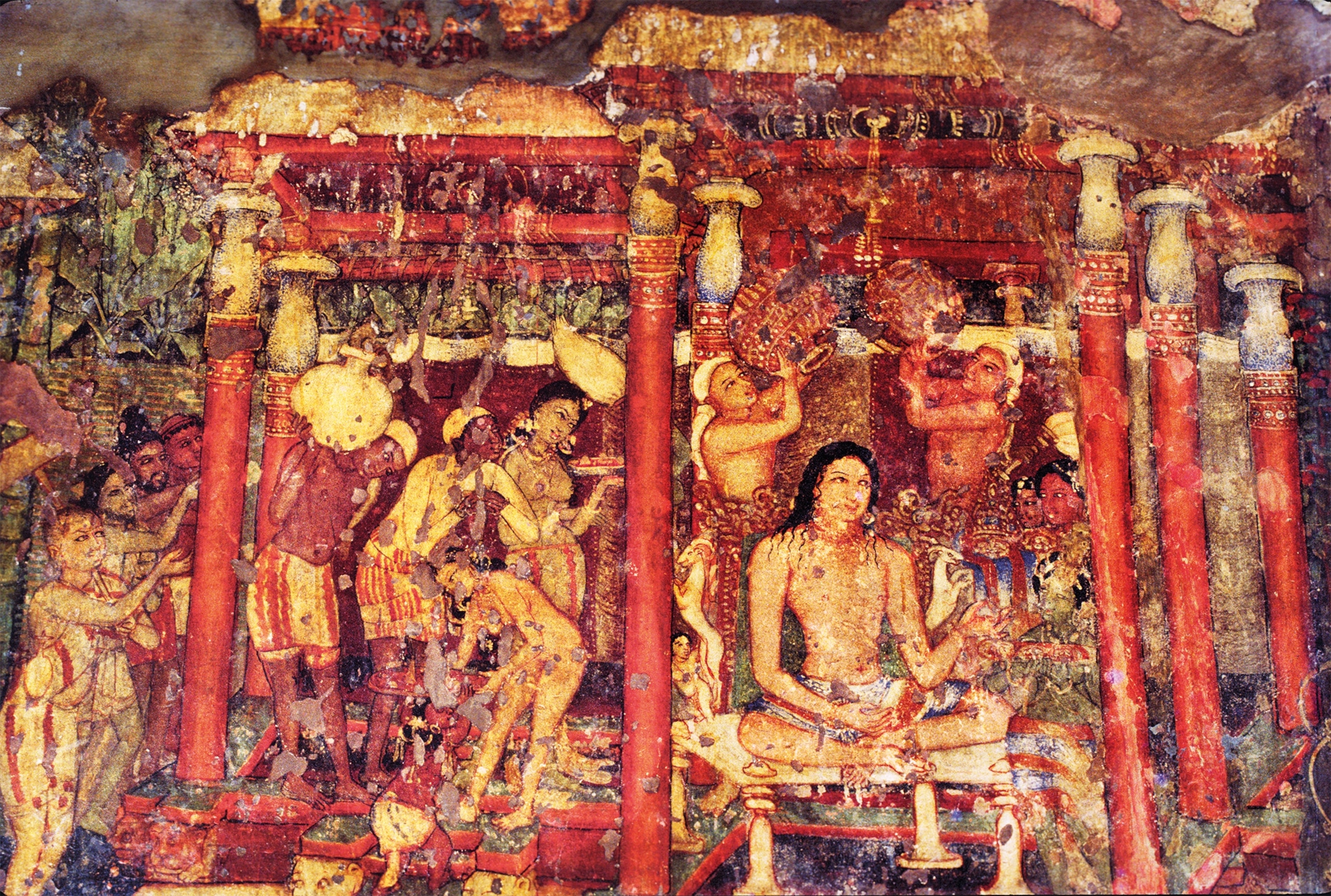
One of the most enchanting murals depicts the beatific figure of a bodhisattva who represents infinite compassion, Padmapani (also known as Avalokite ́svara) holding a lotus. Appearing near the entrance of one of the shrines, Padmapani stands as guardian, offering a vision of peace to all who enter.
(Buddha's birthplace yields clues about his mysterious life.)
Statues of bodhisattvas greet visitors to the caves, just as they must have welcomed the pilgrims, monks, and merchants who passed through Ajanta during its heyday. On the walls are intricately composed murals that tell stories, called Jatakas, from the many past lives of the Buddha. Other works depict incidents from the life of the historical Buddha, Siddhartha Gautama, an Indian prince who lived a thousand years earlier.
The paintings serve as illustrated classics, fifth-century style, meant to awaken devotion and heighten spiritual awareness through the act of seeing. For most visitors today, the tales are arcane—and yet the sensation of watching the images emerge from the dark in all their grace and beauty links then and now.
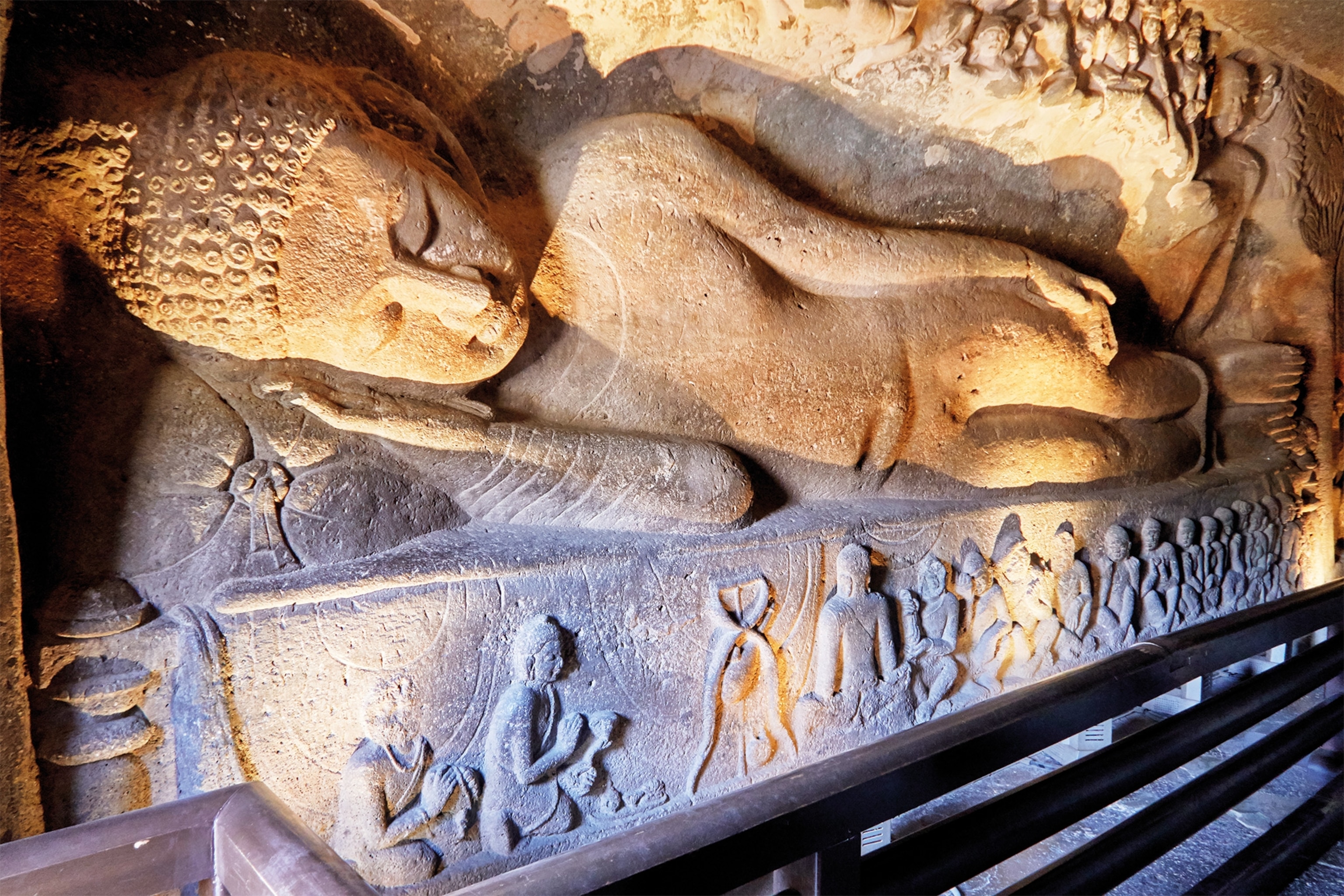
Preservation efforts
In modern times, the world has slowly rediscovered the sublime power of the paintings. National Geographic photographer Volkmar Wentzel visited Ajanta and neighboring Ellora on his 1946-47 journey across India. He wanted to photograph the frescoes with the new Ektachrome color film, but the heat was so intense the emulsion melted. Wentzel eventually had to ship in ice from 100 miles away and used the shadowy recesses of the cave as his darkroom.
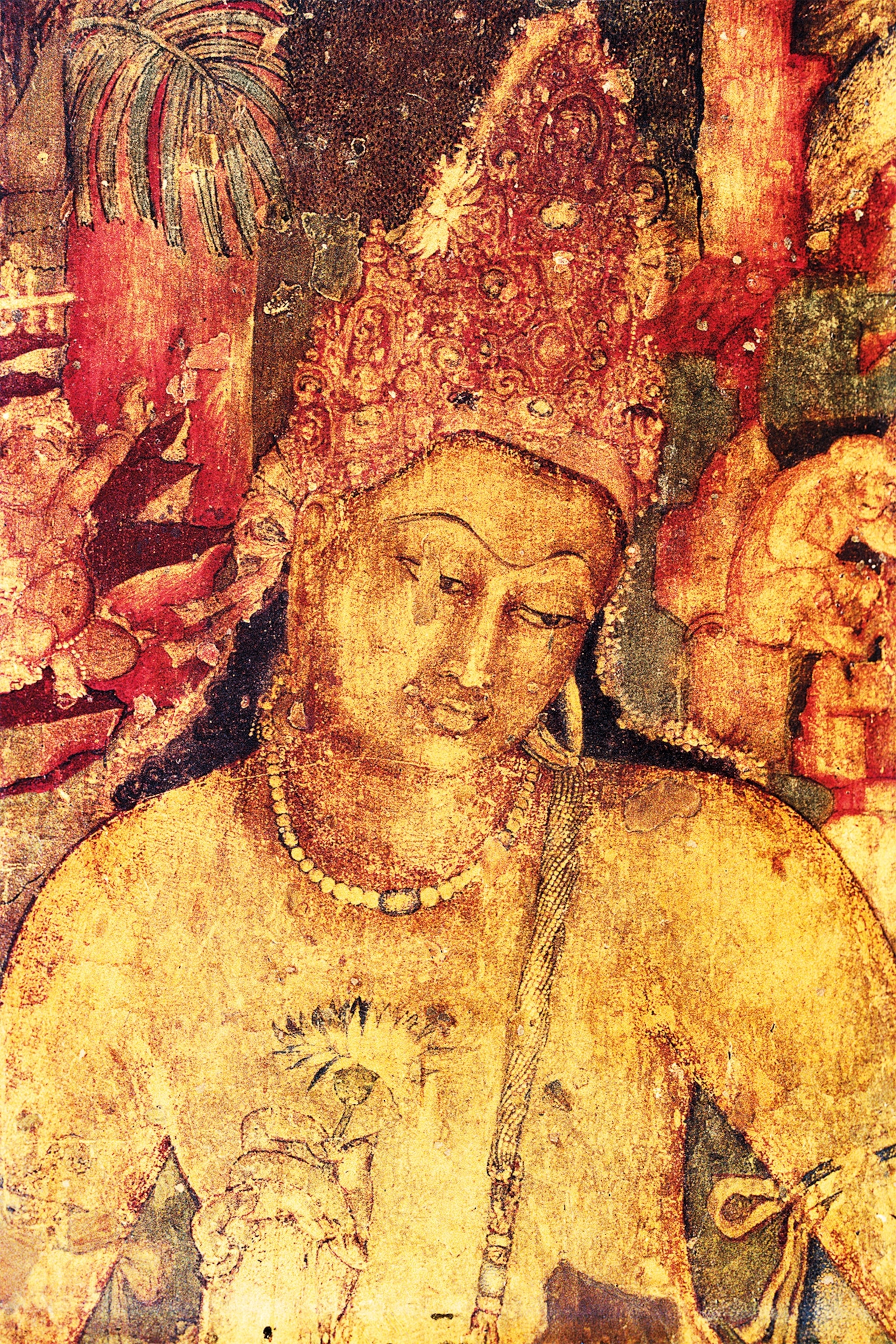
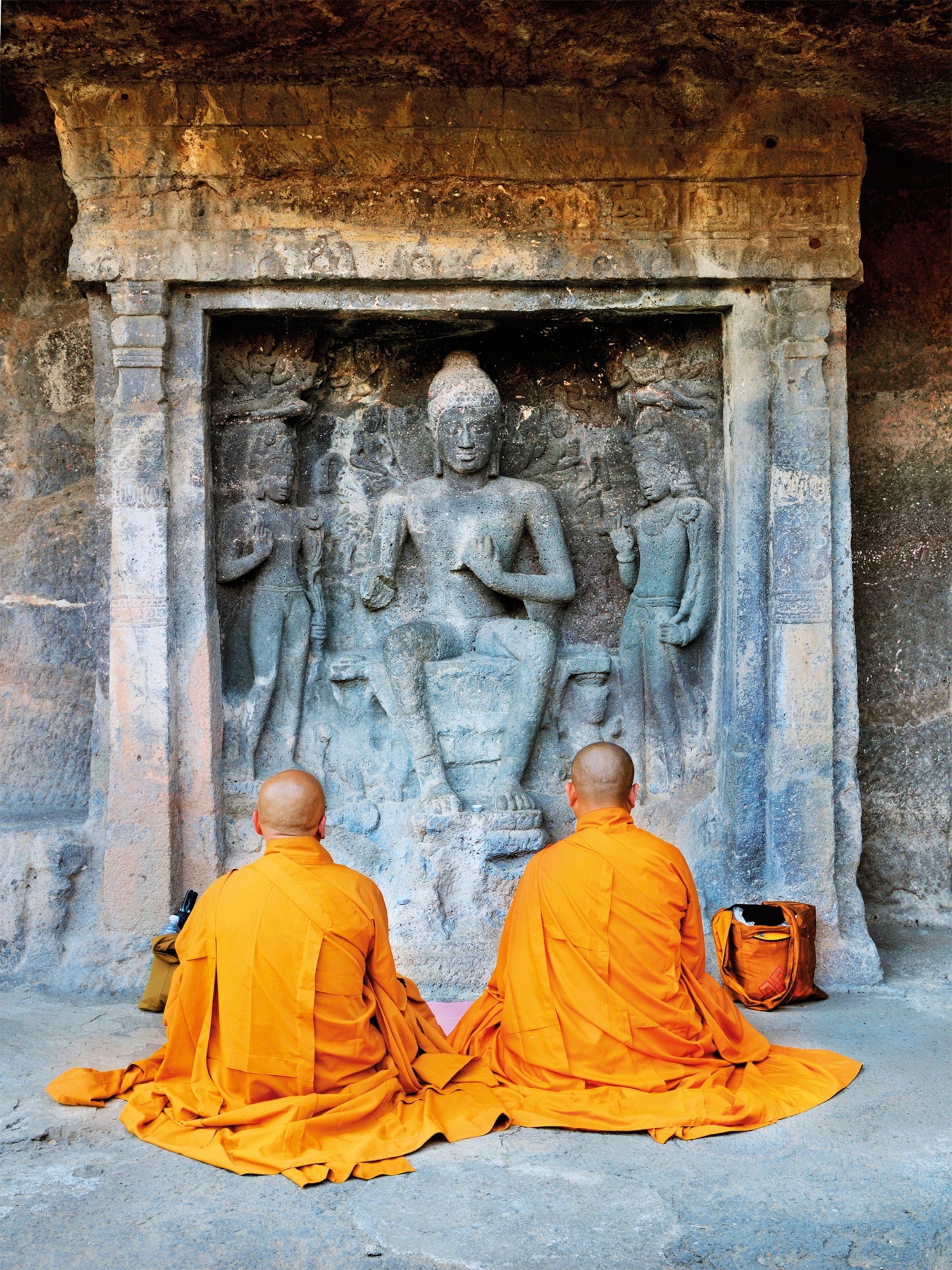
The complex was named a UNESCO World Heritage site in 1983, but an ill-advised attempt at preservation by two Italian conservationists covered many murals in varnish and then shellac, which distorted the colors. Rajdeo Singh, the Archaeological Survey of India’s chief of conservation, launched an intensive preservation campaign in 1999. Indian photographer and filmmaker Benoy Behl has been documenting the caves for decades and is still moved by the ancient composition: “It shows us the divine part of ourselves.”
(This U.S. national park has the world’s longest cave system—and an unusual history.)
Despite the Ajanta paintings’ ethereal beauty, they were once viewed as a “flash in a pan,” an isolated, extraordinary achievement. Recent studies have made it clear that the splendors of Ajanta emerged from earlier trends, and their influence spread far and wide. Behl’s photographs and films have documented how the caves’ artwork fits into broader Hellenic, Hindu, and Buddhist traditions.

Developments in sacred imagery fed the artistic blossoming at Ajanta. This era was when the figure of the Buddha achieved an idealized, perfected human form. At first, artists had re- lied on symbols—footprints, a tree, an empty throne—to represent the historical Buddha, but followers wanted a more personal focus for their devotion. The likeness invented on the Indian subcontinent in the first centuries A.D., with lowered eyes and serene expression, became the prototype for Buddhist images that spread across Asia. It remains the indelible face of the Buddha today.


